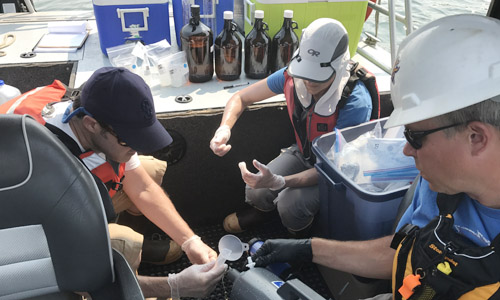This page may be viewed in: English
About the Contamination

Over a century of urbanization and industrial activity polluted the sediments in the Lower Duwamish Waterway. Pollutants found in the river sediment include heavy metals like arsenic, lead, and zinc, and other types of contaminants known as organics, including polychlorinated biphenyls (PCBs) and polyaromatic hydrocarbons (PAHs). Today, people who eat some types of fish and shellfish that live year-round in the waterway and those who have frequent contact with contaminated sediment on the waterway bottom could be exposed to the pollution. Salmon from the Lower Duwamish Waterway are safe to eat.
The members of LDWG are working to clean up this pollution to improve the waterway’s ecosystem and protect people who use the waterway.
What are PCBs?
PCBs are toxic chemicals that were commonly used from 1929 to 1979 for numerous industrial activities and in some household products and building materials. PCBs were widely used in hydraulic oils, electrical transformers, electrical equipment, caulk and oil-based paint. PCBs can be harmful when released into the environment, in part because they persist and travel up through the food chain where people and wildlife can then be exposed to PCBs through eating contaminated fish and shellfish.
